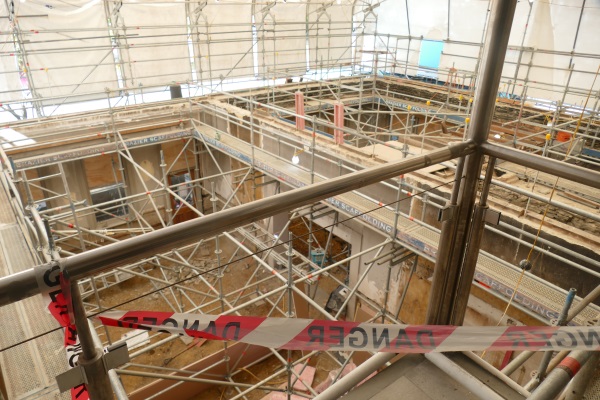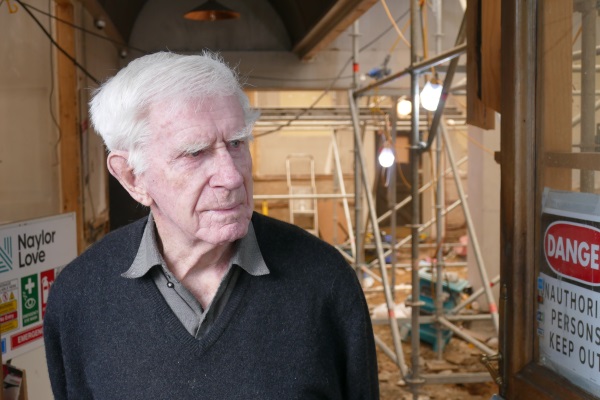It’s likely to be at least the middle of next year before one of Queenstown’s best-loved pubs is open for business again.
A devastating fire ripped through Speight’s Ale House early March 19, caused by an electrical fault.
The fire started in the kitchen of the historic building, on the corner of Shotover and Ballarat streets, which then travelled through the ducts and into the ceiling, ravaging the building.
At its peak, more than 40 volunteer fireys from Queenstown, Frankton and Arrowtown, along with a command unit from Alexandra, were involved in bringing the blaze under control.
Publican Clark Frew, and his landlords, Warren and Lorraine Cooper, initially hoped the massive rebuild would be done in time for this Christmas, but red tape’s got in the way.
The Coopers, along with son Michael, have now lodged resource consent with Queenstown’s council for the extensive rebuild — estimated to
cost at least $4 million.
At present, the ground is rubble, there is no roof and only the external and internal walls remain.
The Heritage New Zealand category 1-protected building, which dates back to 1881, was the former Lake County Council building and has been assessed as having high historic and social value and previously praised for its ‘‘dignified design’’.
Subsequently, it had high architectural value — something that’s now decreased due to the fire.
But the Coopers are determined to rebuild, making it as close to the original as possible.
‘‘We were aware of our responsibilities when we bought the building,’’ Warren says.
However, when asked if the slow progress and red tape’s frustrating, he quips that’s ‘‘the understatement of the century’’.

What remains: External and internal walls are all that’s left of what was Speight’s Ale House, more than eight months after a devastating ire ripped through the historic building
The consent application includes a full heritage impact assessment by Origin Consultants, a ‘mark-up plan set’, noting heritage features on
architectural plans, and a full architectural plan set provided by Designgroup Stapleton Elliott.
When he was mayor, there were often problems under the Historic Places Act, now Heritage New Zealand Act, when historic buildings needed to be removed or repaired.
‘‘I was usually trying to help the people that were affected by the problems, because they experienced a fair bit of frustration in regard to the requirements of the Act, particularly when they were looking for things by digging the floorprint of a site … not sure what they were looking for.
‘‘It was always very expensive, and it was always on the developer.’’
Following his own experience, Warren believes those enacting the Act in situations like his ‘‘have got to be a bit careful that they don’t push too far’’.
‘‘We have not got a building permit.
‘‘We haven’t got resource consent … I’m quite astounded that when we’re going to replace this as close to as possible [to what was there] that we have to have a resource consent.
‘‘It’s extraordinary.
‘‘It’s also tough on the tenant.’’
The consent application notes in situations like this, where a fire causes such extensive damage, it can often be more economically viable to demolish it and claim insurance for a new building.
‘‘In this instance, the applicant has been proactive to stabilise the building and provide weather tightening as soon as possible to prevent further damage,’’ it says.
‘‘Significant work has been undertaken to determine the best way to remediate and protect this important heritage feature.
‘‘Not only is the applicant repairing an historic building that has been fire damaged to its pre-fire state, but the works will ensure that the building can continue to stand in its current position for generations to come.
‘‘It is assessed that these effects will have a positive effect on the historic heritage of the area, and the Queenstown community as a whole.’’
Warren, though, says there’s no way they’d have been allowed to knock it down, leaving him to question ‘‘what happens when another one
goes down and they haven’t got the capacity to rebuild?’’
‘‘It really is, to be honest, quite frightening, the requirements.’’




